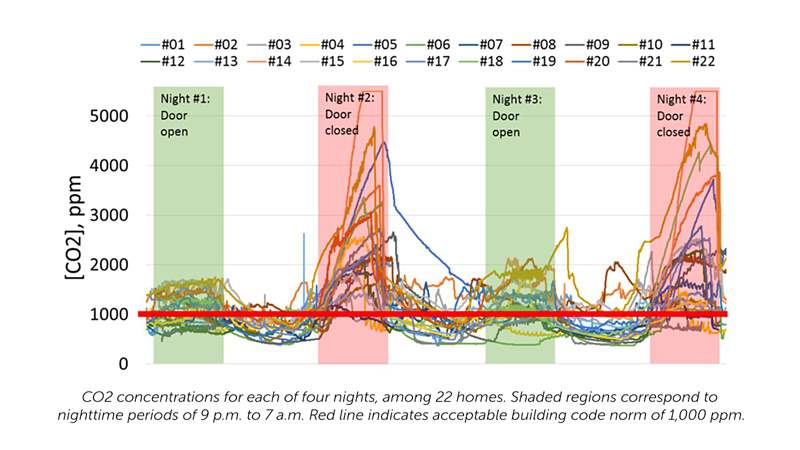Breathe Well, Sleep Well: Cold-Climate Ventilation
Indoor air quality in homes affects human health in profound ways. When that quality is compromised, building occupants can experience health effects that range from immediate to long term. Both airborne pollutants and carbon dioxide contribute to those effects. Although the science is still uncertain about the effects of various levels of exposure to these substances, there is general agreement that improving indoor air quality is an important objective for home improvements.
Vermont Energy Investment Corporation (VEIC), the operator of the statewide energy efficiency utility Efficiency Vermont, undertook a research project during the 2016-2017 heating season, to test CO2 levels in a small sample of New England homes. The study specifically targeted nighttime bedroom CO2 concentrations. The study tested construction industry and energy efficiency industry assumptions about ventilation and airtightness, and demonstrates potential health benefits when energy efficiency programs specify ventilation equipment in new and existing homes. This information can be a significant factor in helping homeowners and building professionals make decisions on homes and energy improvement projects.

Each of the participants’ home bedrooms, when occupied, went above the CO2 threshold for healthful indoor air quality—1,000 parts per million—on at least one of the four test nights. Several homes showed levels more than three times that. The results demonstrate that although heating system type and airtightness did not have a dramatic effect on CO2 levels, the presence of a well-designed ventilation system was a significant factor in keeping CO2 levels under the 1,000 parts per million threshold.
The literature is growing on correlations between indoor air quality and health. Current research links elevated CO2 levels—within the range found in this study—with impaired cognitive function. Researchers commonly use CO2 levels as defensible indicators of harder-to-measure pollutants such as particulates (dust, dirt, soot, smoke) and volatile organic compounds (VOCs, found in paints, certain disinfectants, pesticides, and other household products). These pollutants are generally associated with significantly worse health impacts that extend to respiratory illness, heart disease, and cancer.
The information obtained in this research indicates that homeowners seeking energy improvements in their dwellings should use the opportunity to also make improvements to occupant health by making any necessary upgrades and appropriate design changes to ventilation systems. The information also reinforces the co-benefits to both health and energy efficiency when designers, energy efficiency experts, and building contractors follow the mantra, “Build tight, ventilate right.”
This study points to the need for further research to replicate VEIC’s findings, and to add to the literature in connecting energy efficiency work to improvements in health outcomes. Appropriately incorporating ventilation into homes should now be an objective of energy efficiency optimization in residential new construction and renovations of existing homes.